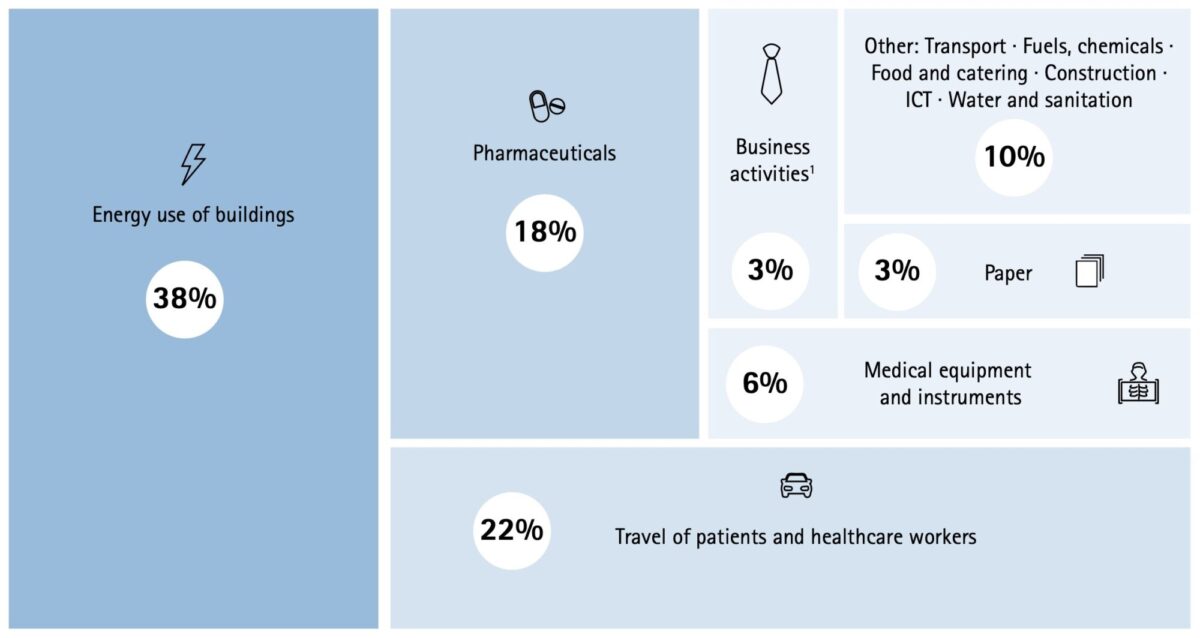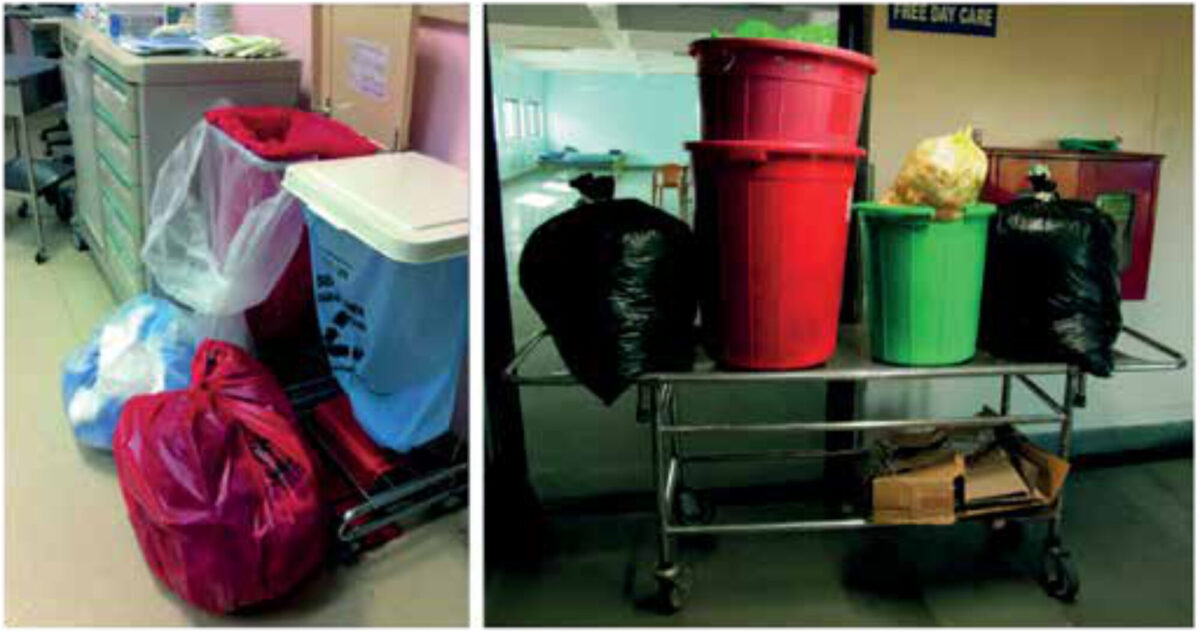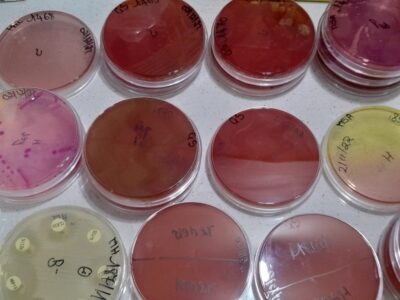Main content
Last September, over 200 scientific medical journals worldwide simultaneously published a Call for emer-gency action to limit global temperature increases, restore biodiversity, and protect health. In these papers, editors call for governments and other leaders to act on keeping global temperature rise below 1.5°C and on restoring nature. Science is unequivocal; a global increase of 1.5°C above the pre-industrial average and the continued loss of biodiversity risk catastrophic harm to health.[1]
Climate change is already impacting health in a myriad of ways, including death and illness from increasingly frequent extreme weather events such as: heatwaves, storms and floods; the disruption of food systems; increases in zoonoses and food-, water- and vector-borne diseases; and mental health issues. Furthermore, climate change is undermining many of the social determinants for good health, such as livelihoods, equality and access to healthcare and social support structures. Despite the world’s neces-sary preoccupation with Covid-19, we cannot wait for the pandemic to end and must rapidly reduce green-house gas (GHG) emissions.
The healthcare sector is a major con-tributor to greenhouse gas emissions.[2] It is estimated that healthcare’s climate footprint is equivalent to 4.4% of global net emissions (two gigatons of carbon dioxide equivalent). If the health sector were a country, it would be the fifth-largest emitter on the planet. So, the healthcare system itself contributes to a decline in public health. This message has been heard by leaders in the field. During the recent COP26 UN Climate Change Conference in Glasgow, a group of fifty countries committed to develop-ing climate-resilient and low-carbon healthcare systems. Previously, a target of net zero greenhouse gas emissions in the year 2030 was adopted by the National Health Service in the United Kingdom (UK). In the Netherlands, all major players in the healthcare sector signed the Green Deal, commit-ting themselves to a 50% reduction in carbon footprint by the year 2030.
Role of ophthalmologists
Important sources of healthcare related carbon emissions are energy consump-tion, medication, disposables, and patient travel (Figure 1).[3] Although ophthalmology is a small medical specialty, it contributes significantly to all these components. It has the highest surgical volumes in medicine and use of energy-consuming operating rooms; single-use products are increasingly used; large amounts of (single-dose) eye drops are prescribed; and many patients are invited to the clinics. Fortunately, there are ways to improve sustainability within the ophthalmology department.

* Percentage: 100% = 11 megaton CO2
** R&D, consultancy, insurance, legal services, marketing, cleaning, etc.
Areas of improvement
Air conditioning in the operating room
In the Netherlands, the recommenda-tion for the air handling system of air ventilation in the operating room (OR) is currently under consideration for being changed to a lower level (to an air change rate of at least six per hour). Apart from this, the air conditioning should be turned off when the OR is not in use. Research shows that shutting down OR ventilation during off-duty periods does not appear to result in unacceptable high particle count or microbial contamination of OR air thirty minutes after the system is restarted.[4] This will not only save GHG emis-sions but money as well. Moreover, since the air conditioning consumes more than 90% of the total energy use of the OR, it is critical to choose for renewable energy instead of fossil-based energy. Hospital managements should be pushed to buy 100% green energy.
Waste in cataract surgery
One phaco-procedure in the UK produces around 130 kilograms CO2, equivalent to a car ride of 500 kilo-metres. More than 50% of this is due to procurement.[5] Disposable instru-ments can account for 10-20 times as much waste as reusable items.[6] Furthermore, all disposables are clini-cally contaminated waste which must be incinerated or burned, producing large amounts of greenhouse gasses.
It is feasible to lower the carbon footprint of cataract surgery. This has been shown by the Aravind Eye Care System in Southern India. Aravind performs around a thousand surgeries per day, and they generate 250 grams of waste and nearly 6 kilograms of carbon dioxide equivalents in GHGs per phacoemulsification (Figure 2). This carbon footprint is approximately 5% of that in the UK. Many differences can account for this low carbon foot-print, including efficient, high-volume logis-tics and the reuse of instruments, protective equipment and medicines.

These differences do not affect surgi-cal outcomes such as visual acuity or infection prevention. According to Chang [7], the endophthalmitis risk after a phaco in Aravind is 0.01%, which is lower than the 0.04% in the United States of America (USA).[7] This fact can partly be explained by the standard use of intracameral moxifloxacin in Aravind, a drug that is not registered in the USA due to the lack of adequate randomised controlled trials. Chang concludes that the rigid adherence to single-use material creates an exces-sive amount of surgical waste at a high cost, with no proven benefit in postoperative endophthalmitis risk.
Some colleagues argue that disposables are safer than reusables and should therefore be promoted.[9] However, a large survey among more than 1,300 USA cataract surgeons and nurses showed that 93% believe that operat-ing room waste is excessive and should be reduced.[10] More specifically, 78% believed that supplies should be reused more frequently, and 87% wanted medi-cal societies to advocate for reducing the surgical carbon footprint. Assuming comparable cost, 79% of surgeons pre-ferred reusable over disposable instru-ments. They are supported by the lack of evidence that disposable instruments are safer for patients, so their use should be discouraged instead of promoted.
Medication
It is important to consider the reduce, reuse and recycle rationale for medi-cation use in ophthalmology as well. Tauber et al. showed that in different settings for cataract surgery a large proportion of the medication used pre-and intraoperatively is discarded.[11] This was the case for eyedrops, injections and systemics, with percentages ranging from 78% to 5%. Discarded topical eye drops were the most costly, with a total cost averaging 148 US dollars per case. Reasons for discarding these medica-tions could be a lack of counselling for patients, lack of medication labelling, facility policies, and noncompliance with burdensome state requirements.[12]
In addition, one should consider whether post-operative antibiotic eye-drops are still necessary when peropera-tive intracameral antibiotics are used as well. Every ophthalmologist should consider whether reusing multidose medication on multiple patients is possible. In many clinics, for instance, it is OR policy to throw medication away after it has been opened for a single patient. However, it is important to examine the justification of these policies. Chambers, in his editorial (Ophthalmology 2021) shows that this justification is not a scientifically based study, but rather a misinterpretation. He explains that manufacturers of multiple-dose ophthalmic products are required (by the Federal Register) to use an antimicrobial preservative which minimises the chances of injury to the patient should a contamination event occur. This additional level of protec-tion also enables the drug product to be administered to multiple different patients over the course of time until the bottle’s stated expiration date.[13] Each ophthalmologist should consider whether she/he has the possibility of reusing their multi dose medication.
Transport
The Covid-19 pandemic has shown that remote care of patients by the use of telemedicine is also possible for ophthalmologists.[14] Telephone calls and video visits can help to review test results, check on medication adherence, triage patients, or replace check-ups to reduce the number of hospital visits.
Another lesson learned from the Covid-19 pandemic is that online meetings and conferences are feasible. This could also be extended to international meetings and conferences; even a national gathering to watch lectures and discussions abroad may be a reason-able alternative for many attendants. Online meetings have pros and cons, but they certainly cause less GHG emissions compared to long distance travel.[15] Having thousands of ophthal-mologists fly abroad to attend a medi-cal congress is simply not sustainable and not justifiable in these times.[16]
Conclusion
Ophthalmologists are continuously trying to improve the quality of care and keep the healthcare system affordable and accessible for future generations. If the carbon footprint of clinical practice is not lowered, the healthcare system will be compromised. We, ophthal-mologists but also other healthcare professionals, should evaluate our own actions, both private and professional, and take into account our carbon footprint. Only by doing so can we act according to the oath we swore: pri-mum non nocere (first, do no harm).
| Founders of the dutch working group on sustainable ophthalmology The Dutch Working Group on Sustainable Ophthalmology was founded in 2019. The aim of this group is to promote the transition to a sustainable clinical practice within our medical specialty. The group also promotes research, provides information and coordinates action. Based on current guidelines and scientific consensus and respect for patient safety, the group has written directions for a safe and sustainable implementation of common ophthalmological procedures. Examples are intravitreal injections, cataract surgery, and patient gowns during surgery. The national association, the Netherlands Ophthalmological Society, has adopted and recommended these best practices, with a growing number of hospitals implementing them. Recently, Dutch health insurance companies have shown interest in promoting these best practices. https://www.oogheelkunde.org/projectgroep-duurzame-oogheelkunde |
References
- Atwoli L, Baqui AH, Benfield T, et al. Call for emergency action to limit global temperature in-creases, restore biodiversity, and protect health. N Engl J Med. 2021 Sep 16;385(12):1134-1137. doi: 10.1056/NEJMe2113200
- Eckelman MJ, Huang K, Lagasse R, et al. Health care pollution and public health damage in the United States: an update. Health Aff (Millwood). 2020 Dec;39(12):2071-9
- Gupta Strategists. Een stuur voor de transitie naar duurzame gezondheidszorg: kwantificering van de CO2-uitstoot en maatregelen voor verduurzaming [Internet]. Amsterdam: Gupta Strategists; 2019. 33 p. Available at: https://gupta-strategists.nl/storage/files/1920_Studie_Duurzame_Gezondheidszorg_DIGITAL_DEF.pdf.
- Dettenkofer M, Scherrer M, Hoch V, et al. Shutting down operating theater ventilation when the theater is not in use: infection control and environmental aspects. Infect Control Hosp Epidemiol. 2003 Aug;24(8):596-600. doi: 10.1086/502260
- Morris DS, Wright T, Somner JEA, et al. The carbon footprint of cataract surgery. Eye. 2013 Apr;27(4):495-501. doi: 10.1038/eye.2013.9
- Park EA, LaMattina KC. Economic and environmental impact of single-use plastics at a large ophthalmology outpatient service. J Glaucoma. 2020 Dec;29(12):1179-83. Doi: 10.1097/IJG.0000000000001655
- Chang DF. The ESCRS intracameral cefuroxime study: the debate continues. J Cat Refract Surg. 2021 Feb 1;47(2):150-2. doi: 10.1097/j/jcrs.0000000000000559
- Ambati B. Re: Schwartz et al: Intracameral antibiotics and cataract surgery: endophthalmitis rates, costs, and stewardship (Ophthalmology. 2016;123:1411-1413). Ophthalmology. 2017 Aprl;124(4);242-e3. doi: 10.1016/j.ophtha.2016.08.033
- Sauder G. Let’s throw everything away…except the patient and the surgeon. Ophthalmology Times Europe July/August 2021;17(6)
- Chang DF, CL Thiel, Ophthalmic Instrument Cleaning and Sterilization Task Force. Survey of cataract surgeons’ and nurses’ attitudes towards operating room waste. J Cataract Refract Surg. 2020 Jul;46(7):933-40. doi: 10.1097/j.jcrs/0000000000000267
- Tauber J, Chinwuba I, Kleyn D, et al. Quantification of the cost and potential environmental effects of unused pharmaceutical products in cataract surgery. JAMA Ophthalmol. 2019 Oct 1;137(10):1156-63. doi: 10.1001/jamaophthalmol.2019.2901
- Palmer DJ, Volpe NJ, Hackett NJ. Improving quality of care and reducing topical medication operating room waste. J Cataract Refract Surg. 2020 Aug;46(8):1200-1. doi: 10.1097/j.jcrs.0000000000000184
- Chambers WA. Waste no more. Ophthalmology. 2021 Dec;128(12):1667-8. doi: 10.1016/j.ophtha.2021.09.003
- Mirza Saleem S, Pasquale LR, Sidoti PA, et al. Virtual ophthalmology: telemedicine in a COVID-19 era. Am J Ophthalmol. 2020 Aug;216:237-42. doi: 10.1016/j.ajo.2020.04.029
- Neugebauer S, Bolz M, Mankaa R, et al. How sustainable are sustainability confer-ences? Comprehensive life cycle assessment of an international conference series in Europe. Journal of Cleaner Production. 2019 Sep:241:118516. doi: 10.1016/j.jclepro.2019.118516
- Bousema T, Selvaraj P, Djimde AA, et al. Reducing the carbon footprint of academic confer-ences: the Example of the American Society of Tropical Medicine and Hygiene. Am J Trop Med Hyg. 2020 Nov;103(5):1758-61. doi: 10.4269/ajtmh.20-1013



















































